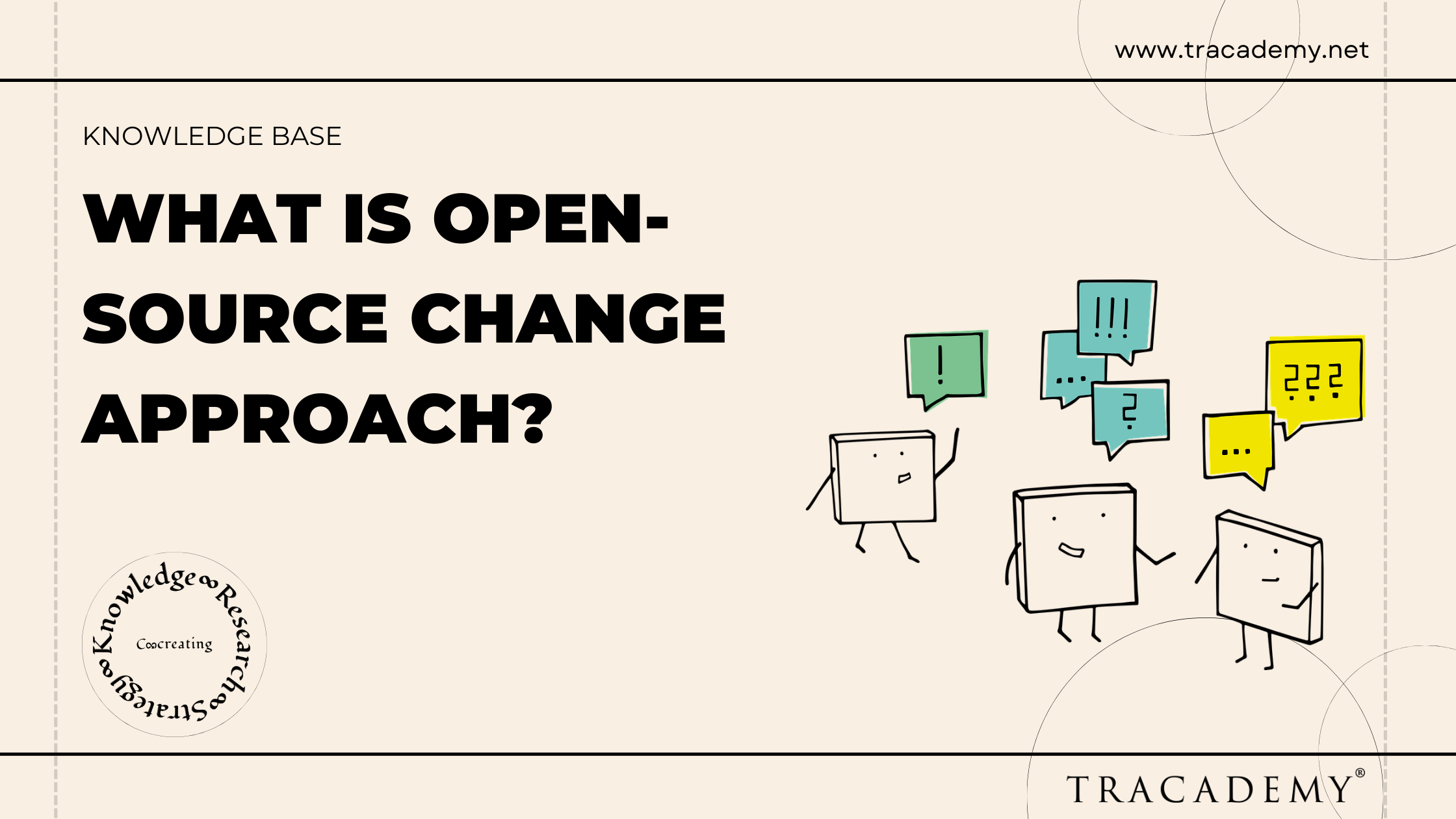As the name implies, the open-source approach is something that is accessible to everyone and allows everyone to involve and share their point of view. According to a survey conducted by Gartner with 6K+ employees of various roles, the organization that moved away from top-down change management towards a more inclusive open-source approach has increased the change success rate from 34% to 58% and improved employee engagement by 38%. By definition from Gartner, open-source change strategies are more inclusive of expertise and different perspectives, closer to the actual workflow, and constantly evolving through collective action.
The open-source approach involves three significant elements
- Involving the workforce in co-creating strategic decisions.
- Employees are responsible for how to work the change.
- Open conversation about the change is encouraged.
The co-creation part provides a better decision-making process. It involves the leader analyzing whom to include and when through an open decision framework. The framework provides a guideline for the leaders to validate decisions based on expertise, impact, and customer satisfaction. The main motto is to facilitate an open level of transparency on how the decisions are made. Although the approach slows down the decision-making process but saves a great deal down the road.
After the initial strategic decision phase, leaders have to shift the ownership of the implementation to the employees by setting strategic goals and guardrails to support them. Whereas the employees will be accountable for defining success metrics, spotting obstacles, delegating tasks, and how they collaborate. The approach provides the freedom to work within the guardrails set by the leaders and execute the change more effectively by spotting the barriers and sharing the best practices throughout the company. The leader will then be able to remove the obstacles, ensure alignment and provide timely support to the employees.
Leaders should allow employees to share their negative emotions and uncomfortableness on the change journey. Acknowledging their negative emotions reduces their resistance to change and provides an opportunity to improve their control over their feelings and explore rational responses to change. Leaders should encourage employees to share their change insights with the workforce. It can facilitate quick addressing of resistance throughout the entire workforce. Leaders need to understand that telling is not talking. They should initiate two-way conversations with their employees by encouraging them to question the process and answer them. This will transforms employees into seekers and not just receivers of change information.
Here are some key-action checklists involved in this approach
- Identifying key leaders who are will willing to support and participate in an open-source approach
- Do the organization structure and front-line teams encourage employees to participate and provide insights in an open-source conversation?
- Does the organization have the right communication platform to monitor, collect and consolidate the information from employees?
- Do the employees have access to leaders in real-time to enable multidirectional dialogue?
- Does the open-source approach suitable for the current change initiatives – are there any complexity, sensitivity, and time constraints?
- Define a clear statement on the change goals, model, and encouraged behaviors that are required.
- Define when the open-source approach will begin and how the teams will be communicated.
- Outline the areas that will be managed by the leaders and how much control will be given to the narrative, to establish a transparent medium.
- Define how success will be measured and the rewarding system to encourage employee engagement.
Reference:
-
Changing Change Management - An open-source approach - Gartner -
Engaging Employees in Change through an open-source approach - BCG -
Cracking the code of change - HBR

